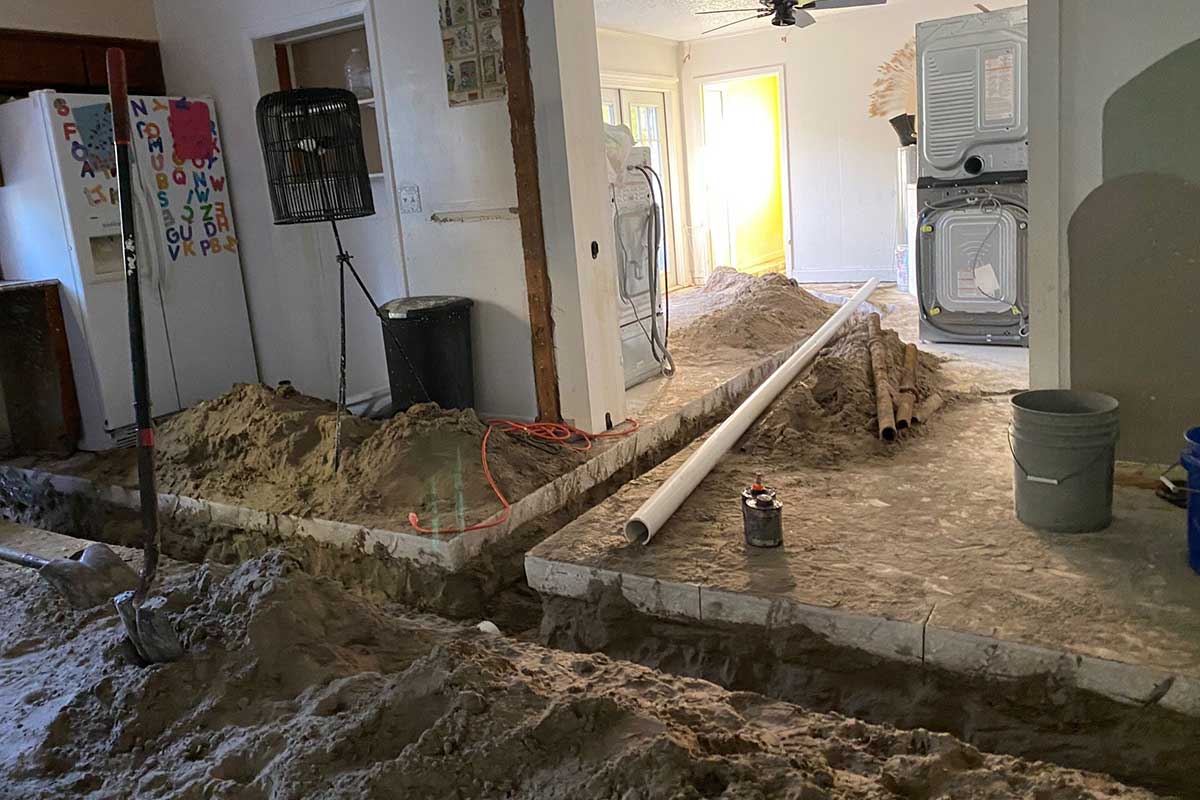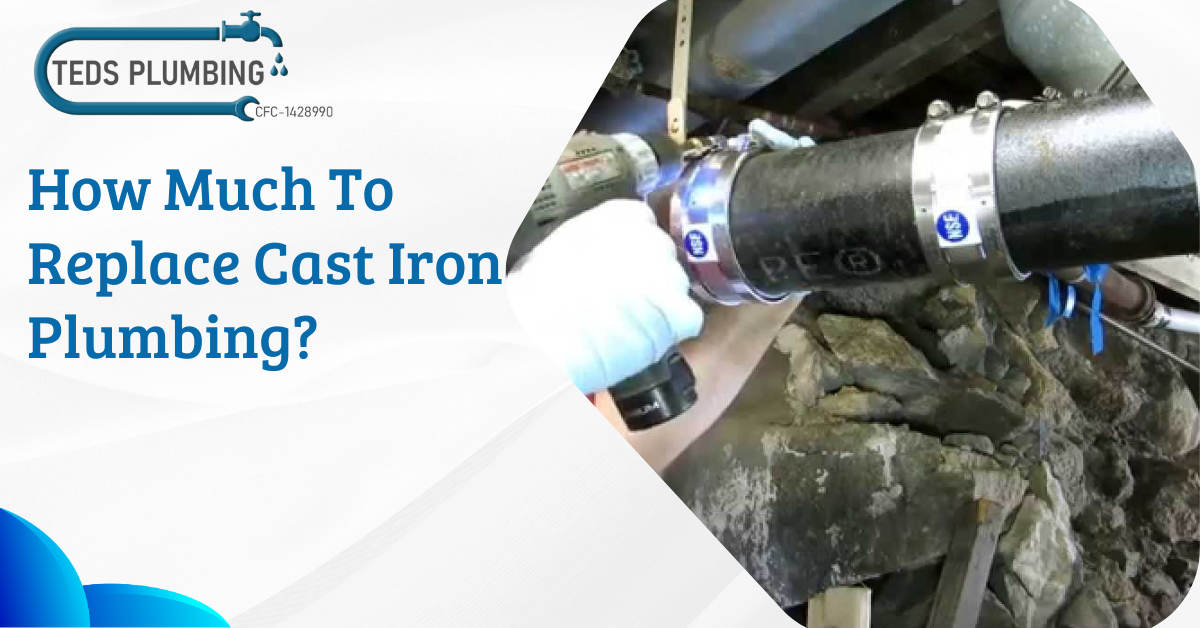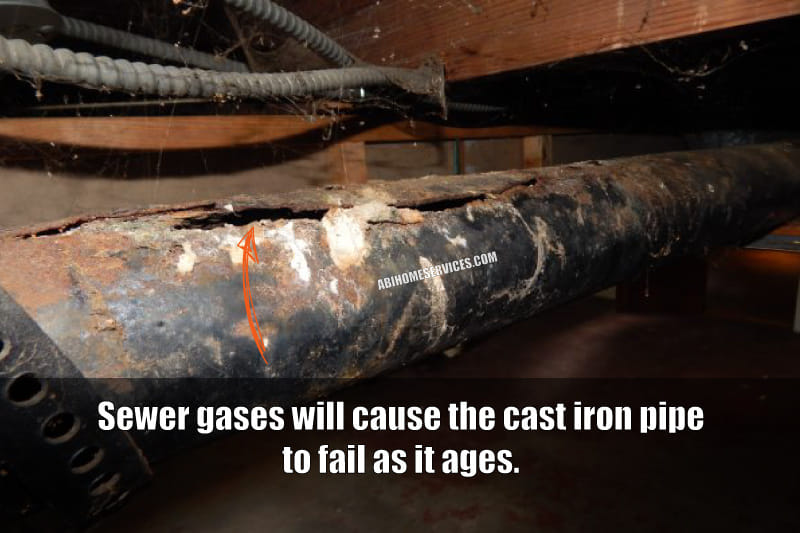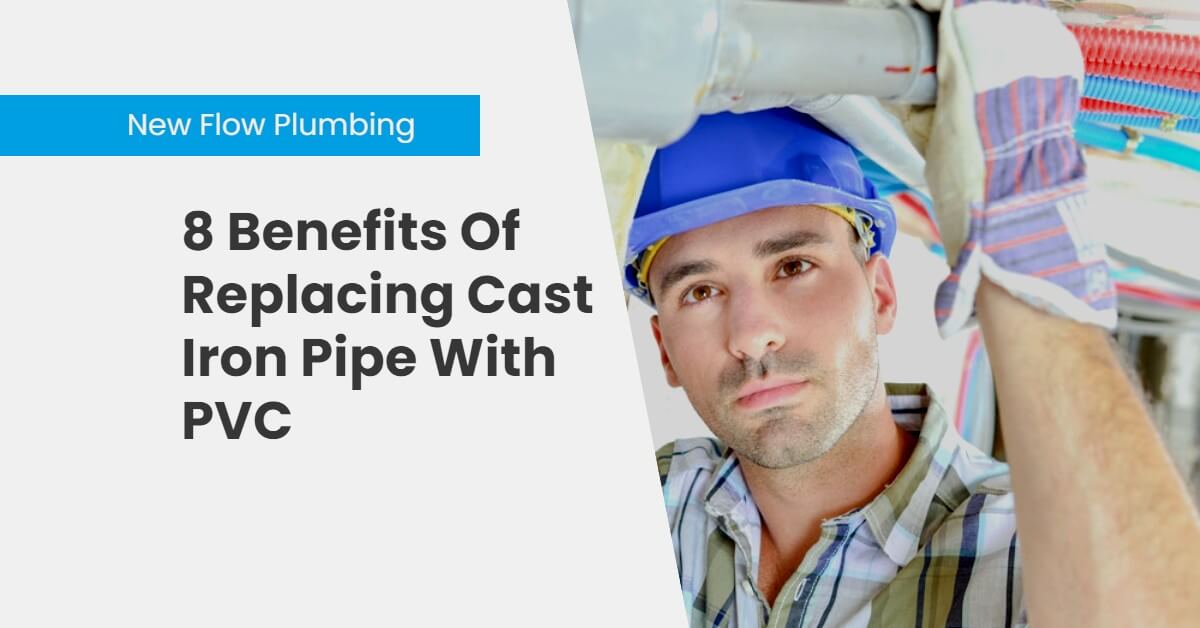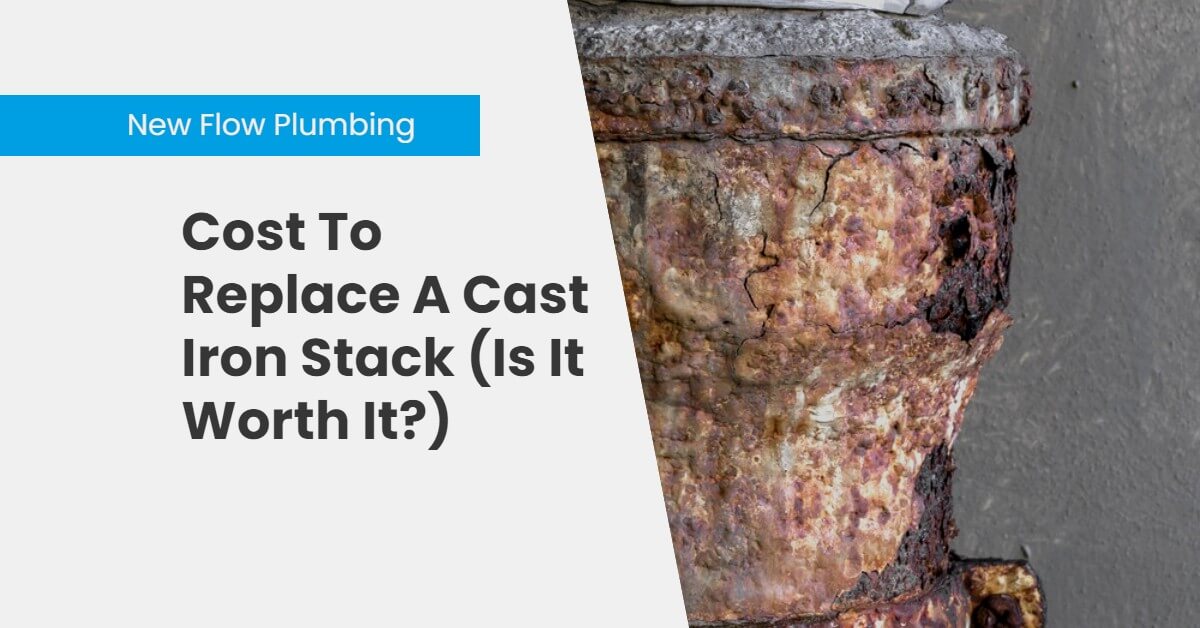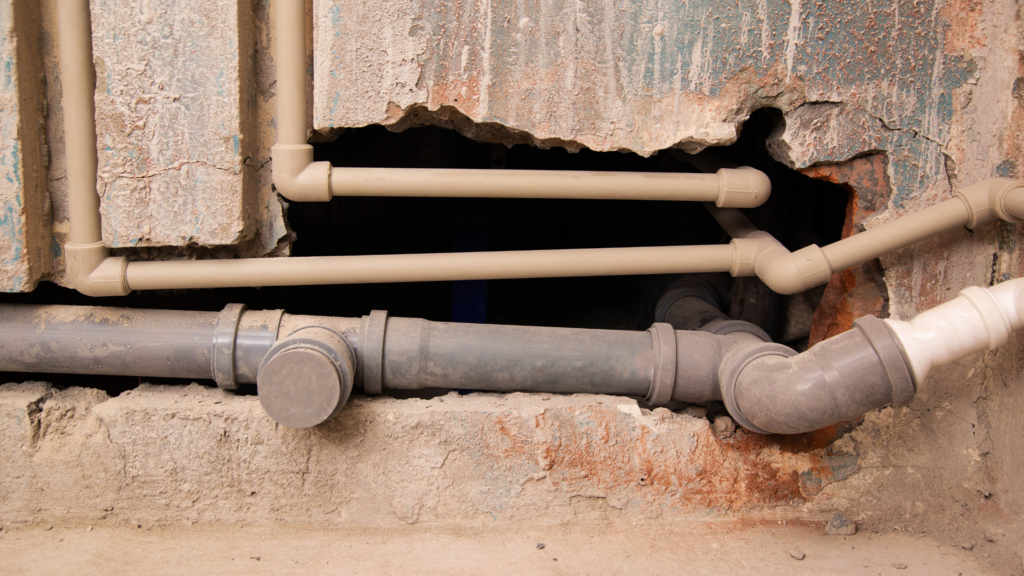Cost Of Replacing Cast Iron Pipes

Replacing cast iron pipes in your home can be a significant investment, and understanding the costs involved is crucial for budgeting and planning. This guide will break down the various factors influencing the price of cast iron pipe replacement, helping you make an informed decision about your plumbing needs.
Understanding Cast Iron Pipe Issues
Before diving into costs, it's essential to understand why cast iron pipes need replacing in the first place. Cast iron, while durable, is susceptible to corrosion, especially in older homes. This corrosion can lead to several problems:
- Leaks: As the pipe corrodes, small pinhole leaks can develop, leading to water damage and mold growth.
- Reduced Water Flow: Corrosion can build up inside the pipe, restricting water flow and reducing water pressure. Think of it like cholesterol buildup in your arteries, restricting blood flow.
- Sewer Backups: In sewer lines, corrosion can cause blockages and backups, leading to unpleasant and unsanitary conditions. Tree roots are also drawn to the moisture and nutrients and can infiltrate corroded pipes, further exacerbating the problem.
- Pipe Collapse: In severe cases, the pipe can completely collapse, requiring emergency repairs.
Ignoring these issues can lead to more expensive repairs down the line, so proactive replacement is often the best course of action.
Factors Affecting the Cost of Cast Iron Pipe Replacement
The cost of replacing cast iron pipes isn't a fixed number. Several factors contribute to the overall price. Let's examine these factors in detail:
1. Scope of the Project
This is arguably the most significant factor. Are you replacing all the cast iron pipes in your house, or just a section? Replacing the entire system will naturally cost more than a partial replacement.
- Full Replacement: Replacing all drain, waste, and vent (DWV) pipes from under the foundation to all fixtures. This is the most comprehensive and expensive option.
- Partial Replacement: Replacing only the problematic sections of pipe, often due to leaks or blockages. This is a less expensive option but might require future repairs if other sections start to fail.
- Spot Repair: Repairing a small section of pipe. This is a temporary solution and usually only appropriate for very minor issues.
2. Location of the Pipes
The accessibility of the pipes greatly impacts labor costs. Pipes located in difficult-to-reach areas, such as:
- Under concrete slabs: Requires breaking through the concrete, which adds to the labor and material costs.
- Inside walls: Requires opening up walls and potentially repairing drywall and paint.
- In crawl spaces: Confined spaces make the work more challenging and time-consuming.
- Outside, buried underground: Requires excavation, which can be expensive depending on the depth and soil conditions.
Easier access translates to lower labor costs.
3. Type of Replacement Pipe
The material you choose to replace your cast iron pipes with will affect the overall cost. Common alternatives include:
- PVC (Polyvinyl Chloride): The most affordable option. PVC is lightweight, durable, and resistant to corrosion. It's a popular choice for drain and waste lines.
- ABS (Acrylonitrile Butadiene Styrene): Another affordable plastic option, similar to PVC. ABS is typically black in color and may be preferred in certain climates.
- PEX (Cross-linked Polyethylene): Commonly used for water supply lines. PEX is flexible and resistant to freezing, making it a good option in colder climates.
- Copper: A more expensive option than plastic, but highly durable and resistant to corrosion. Copper is often used for water supply lines.
- Cast Iron: While you're replacing it, newer cast iron pipes are coated to prevent corrosion and can be a viable option if you want to maintain the same material. However, it's generally more expensive than plastic alternatives.
PVC is generally the most cost-effective choice for replacing cast iron drain lines.
4. Labor Costs
Labor costs make up a significant portion of the total cost. Plumbing rates vary depending on:
- Location: Plumbers in major metropolitan areas typically charge more than those in smaller towns.
- Experience and Expertise: Experienced and licensed plumbers may charge more, but their expertise can save you money in the long run by ensuring the job is done correctly.
- Complexity of the Job: More complex jobs require more time and skill, resulting in higher labor costs.
- Permits and Inspections: Obtaining the necessary permits and inspections adds to the overall cost but ensures the work is compliant with local codes.
Always get multiple quotes from licensed and insured plumbers to compare prices and services.
5. Unexpected Issues
During the replacement process, plumbers may uncover unexpected problems, such as:
- Hidden Leaks: Leaks that were not initially apparent can add to the scope of the project.
- Structural Damage: Corrosion can weaken surrounding structures, requiring additional repairs.
- Asbestos: Older homes may contain asbestos in pipe insulation or other materials, requiring specialized removal.
- Code Upgrades: Bringing your plumbing up to current code may require additional work.
It's wise to set aside a contingency fund to cover unexpected costs.
6. Permits and Inspections
Most jurisdictions require permits for plumbing work, including cast iron pipe replacement. These permits ensure that the work is done according to code and protect homeowners from substandard work.
- Permit Fees: These vary depending on the location and scope of the project.
- Inspection Fees: After the work is completed, an inspector will verify that it meets code requirements.
Your plumber should be able to handle the permit process for you.
Estimating the Cost: A Range
Given all the factors mentioned above, providing an exact cost estimate is difficult. However, here's a general range to give you an idea:
- Partial Replacement (small section): $500 - $2,000
- Partial Replacement (larger section): $2,000 - $5,000
- Full House Replacement (small to medium sized home): $4,000 - $15,000
- Full House Replacement (large home or complex job): $10,000 - $25,000+
These are just estimates, and the actual cost may vary significantly. Always obtain multiple quotes from qualified plumbers for a more accurate assessment.
Ways to Save Money on Cast Iron Pipe Replacement
While replacing cast iron pipes is a necessary expense, there are ways to potentially reduce the cost:
- Get Multiple Quotes: This is the most important step. Compare bids from at least three different plumbers.
- Consider PVC: As mentioned earlier, PVC is generally the most affordable replacement material.
- Minimize Wall and Floor Damage: Discuss with your plumber the least invasive methods for accessing the pipes. This can reduce repair costs for walls, floors, and ceilings.
- Schedule During Off-Peak Season: Plumbers may be less busy during certain times of the year, potentially leading to lower labor rates.
- Do Some of the Prep Work Yourself (With Caution): While you should never attempt plumbing work yourself unless you are qualified, you might be able to handle some minor prep work, such as removing items from the work area or clearing access paths. Discuss this with your plumber beforehand.
Important Considerations Before You Begin
Before you commit to replacing your cast iron pipes, keep these points in mind:
- Get a Professional Inspection: Have a qualified plumber inspect your pipes to assess the extent of the damage and determine the best course of action. A camera inspection can be very helpful.
- Check Your Homeowner's Insurance: Some policies may cover water damage caused by pipe leaks, but they typically don't cover the cost of replacing the pipes themselves.
- Ask About Warranties: Make sure the plumber offers a warranty on their work and the materials used.
- Check References and Reviews: Before hiring a plumber, check their references and read online reviews to ensure they have a good reputation.
- Ensure Proper Licensing and Insurance: Only work with licensed and insured plumbers to protect yourself from liability.
Conclusion
Replacing cast iron pipes is a significant undertaking, but with proper planning and research, you can navigate the process effectively. Understanding the factors that influence the cost, obtaining multiple quotes, and choosing the right plumber will help you ensure that the job is done correctly and at a fair price. Ignoring failing cast iron pipes can lead to far more expensive and disruptive problems in the long run, making proactive replacement a worthwhile investment in your home's future.


